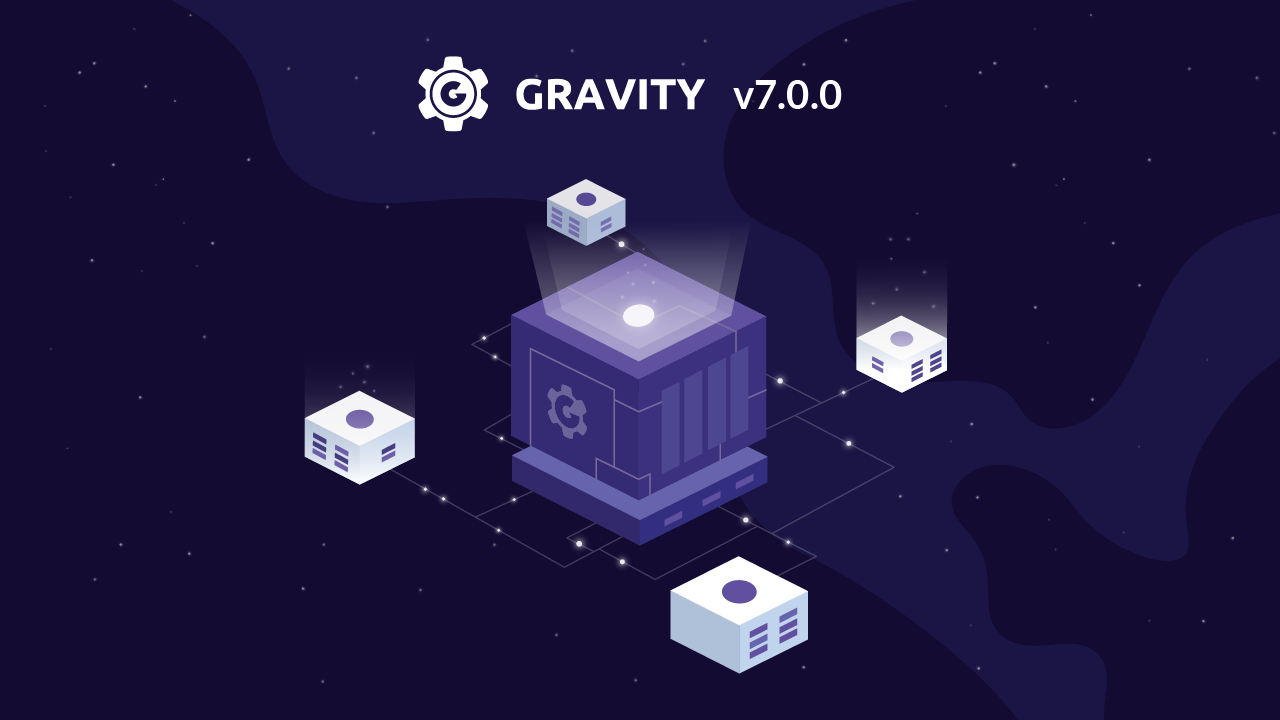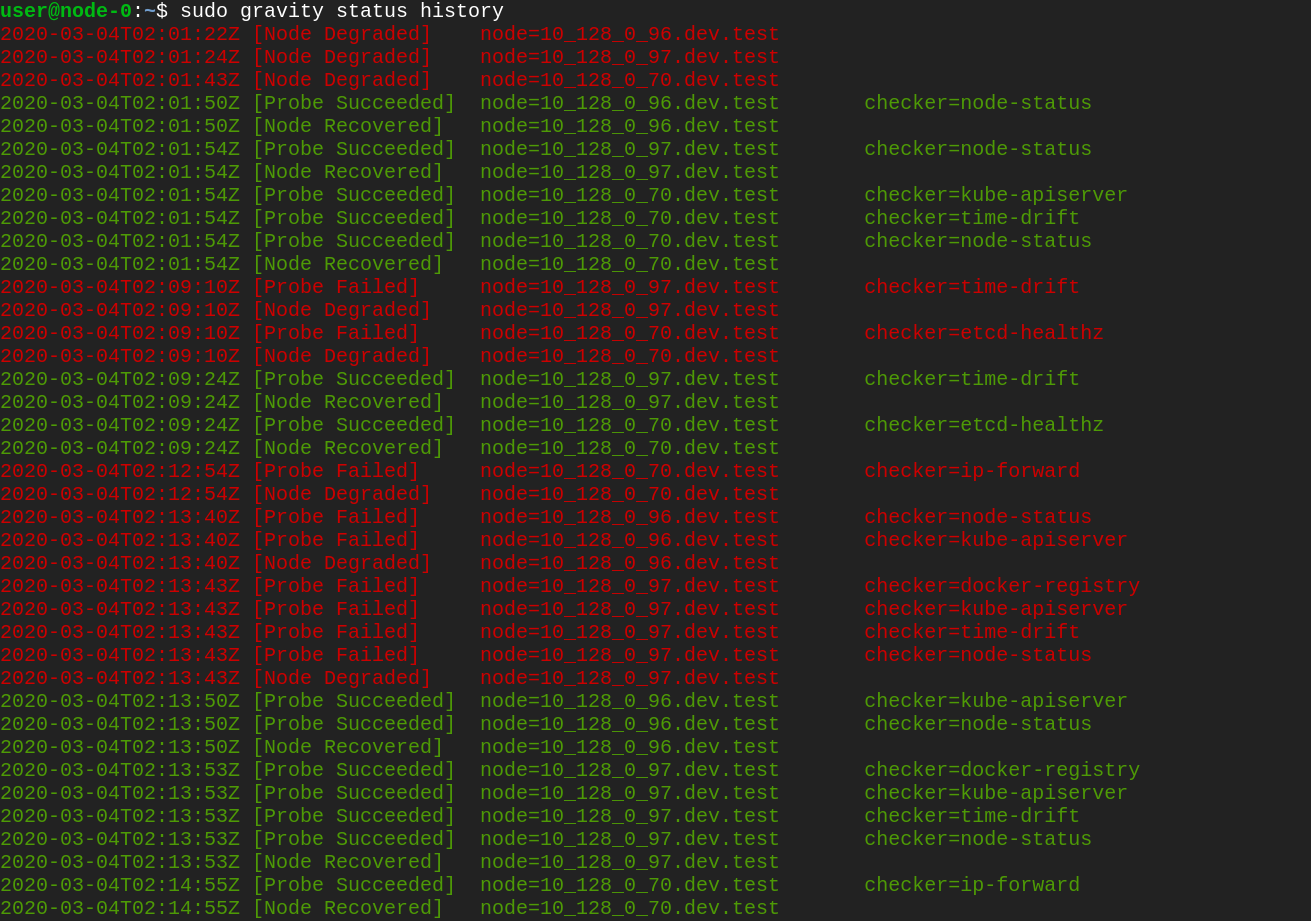Table Of Contents
Home - Teleport Blog - Announcing Gravity 7.0 - Mar 4, 2020
Announcing Gravity 7.0

Today, we are excited to announce the release of Gravity 7.0! Gravity is a tool for developers to package multiple Kubernetes applications into an easily distributable .tar file called a "cluster image". A cluster image contains everything an application needs and it can be used for quickly creating Kubernetes clusters pre-loaded with applications from scratch or loading applications contained within an image into an existing Kubernetes cluster like OpenShift or GKE.
Gravity is used by organizations that need to deploy their Kubernetes applications into "uncharted territories" such as their customers’ infrastructure (cloud or on-prem), edge locations, or to package applications for easy internal distribution, across different clouds, and infrastructure form factors.
What's New?
Gravity 7.0 is an important milestone for us because with this release, we’re tackling the two most frequently requested capabilities:
- Deploying Gravity Cluster Images into existing Kubernetes clusters
- Making it easier to run Gravity clusters in environments where security and compliance are paramount
Let’s dive deeper into these areas.
Deploying into Existing Kubernetes Clusters
Normally, Gravity cluster images are used to create Kubernetes clusters pre-loaded with applications from scratch, or to update clusters that were created with Gravity earlier. This capability is what makes Gravity the default go-to open source solution for organizations that need to run large numbers of clusters distributed all over the world.
However, there are use cases where users already have an existing Kubernetes cluster deployed in a target environment, managed by an existing team that wisely prefers to avoid fixing what’s not broken.
Gravity 7.0 allows such users to leverage their existing Kubernetes clusters and inject applications contained within a Gravity cluster image into an existing environment like OpenShift or GKE, simplifying application delivery into locations where Kubernetes is already present.
Security & Compliance Enhancements
Most Gravity users operate in industries where security and compliance are paramount, e.g. finance, insurance, government, or any organization that offers solutions to those institutions. They’ve talked to us and we’ve listened. Gravity 7.0 comes with the following security-oriented features:
- Support for SELinux. SELinux needs no introduction. It’s a common platform, originally envisioned and built by the NSA for hardening Linux-based environments. Prior to this release, Gravity clusters could only be instantiated on servers with SELinux disabled. This release of Gravity allows you to create security-hardened Kubernetes clusters on infrastructure that is also protected by SELinux.
-
Native integration with SSH Gateway
. Gravity has always included an integrated SSH/Kubernetes gateway to synchronize role-based access control for both protocols and providing a unified authentication for both SSH and K8s API. The gateway is called Teleport and it can be used separately from Gravity to protect SSH and Kubernetes infrastructure. However, Gravity used to use its own authentication mechanism. Users had to use a different command ("tele login") to retrieve SSH and Kubernetes certificates from a Gravity cluster. This new release further integrates Gravity with Teleport, so Teleport users can login into Gravity clusters viatsh login.
Other Improvements
Besides supporting legacy Kubernetes clusters and security enhancements, Gravity also adds these two frequently requested features:
- OpenEBS support. Kubernetes clusters created with Gravity are now automatically configured to run OpenEBS. This makes it significantly easier to package databases and other stateful services into Gravity cluster images.
- Timeline View. Gravity users often describe it as "a robot that runs Kubernetes so I don't have to". To help troubleshoot issues, Gravity has always included the 'gravity status' command, which nicely explains what's wrong with your K8s cluster. However, some issues cannot be diagnosed as easily: intermittent hardware failures are a thing, or someone runs an Ansible script that reconfigures the kernel on your fleet - something that doesn't lead to an immediate failure but causes one over time. Gravity 7.0 offers a "timeline view" which allows you to see how a cluster's status has changed over time. This helps engineers troubleshoot the past.


Teleport cybersecurity blog posts and tech news
Every other week we'll send a newsletter with the latest cybersecurity news and Teleport updates.
What's Next?
We have plenty of exciting things on the roadmap. The general direction continues to be making Gravity the only game in town when:
- You need to run hundreds or thousands of Kubernetes clusters on autopilot
- You need to work on infrastructure that you have limited access to
- Security and compliance matter
Stay tuned and subscribe to our mailing list for updates! In the meantime, download and try out Gravity, and let us know you think. Make sure to select pre-releases in the dropdown!
Tags
Teleport Newsletter
Stay up-to-date with the newest Teleport releases by subscribing to our monthly updates.

Subscribe to our newsletter

